Image Gallery: Bronze Age Donkey Burial
Carefully laid to rest
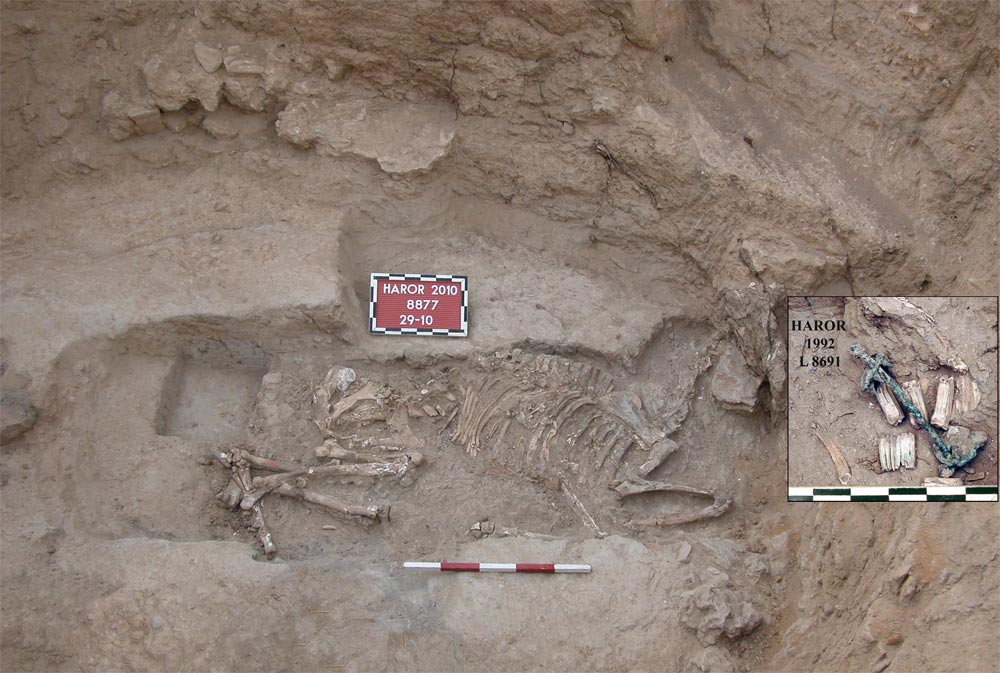
Scientists discovered the skeleton of a ritually interred donkey that had been buried more than 3,500 years ago. Its left hind leg may have been intentionally broken, possibly after rigor mortis, so as to fit it into the pit. The donkey's teeth suggest the animal was around 4 years old.
Bronze Age burial
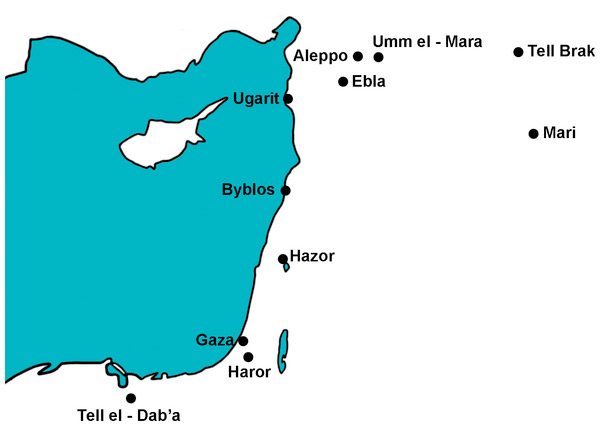
The skeleton was interred at what is now Tel Haror, located about 12 miles (20 kilometers) east of the Mediterranean Sea, is one of the largest Bronze Age sites in southern Israel.
Ritual burial
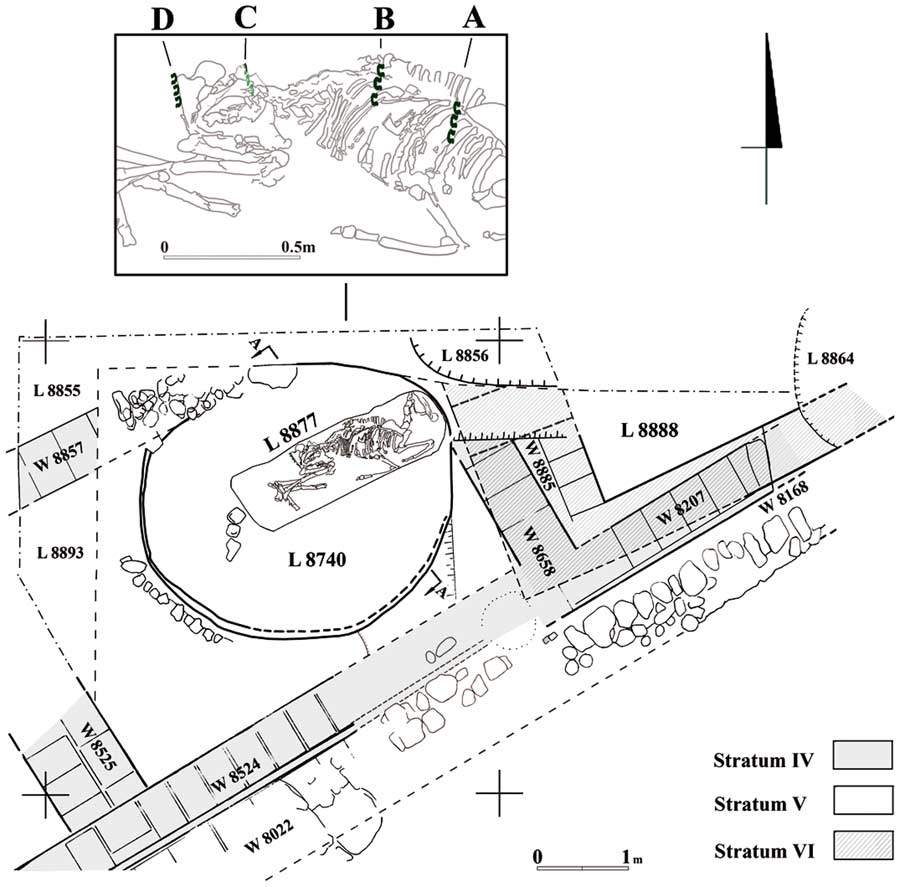
The donkey had been interred next to an offering chamber with two narrow benches for offerings and recessed niches in its walls. The installation where the donkey was buried is roughly circular, its walls coated with mud plaster and filled with ash, hearths and animal bones — "testifying to continuous ritual activity involving the burning and deposition of sacrificial animal remains," the PLOS ONE authors write.
Here, a plan of the offering installation and donkey interment with close-up of groups of saddlebag fasteners.
Bridle bit
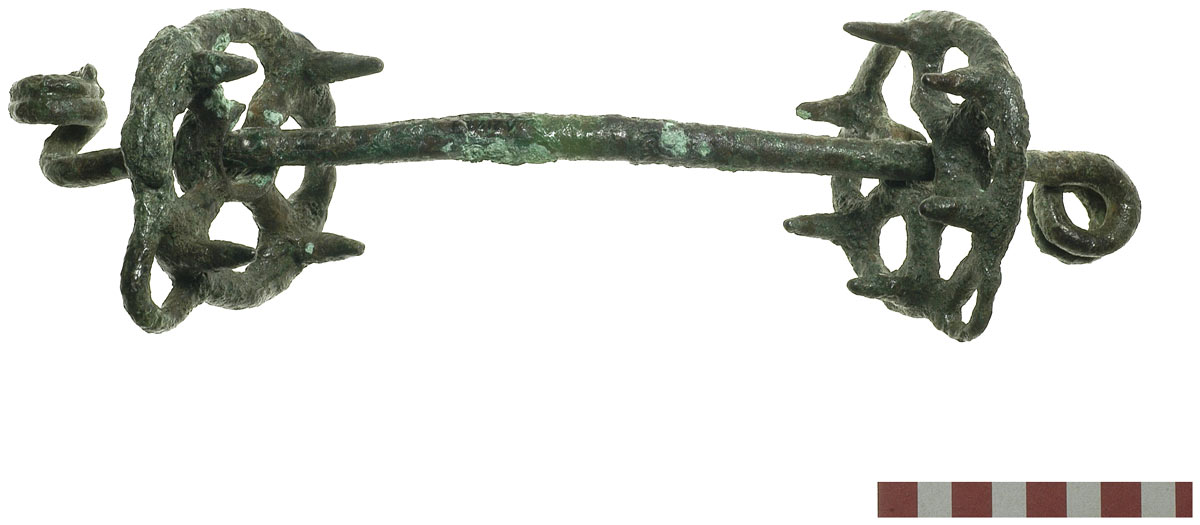
The most outstanding feature of the donkey burial was the bridled metal bit in its mouth and the metal fasteners of saddlebags on its back. Shown here, the bridle bit at The Israel Museum, Jerusalem.
Metal fasteners

Here, the buried metal fasteners of the saddlebags found on the donkey's back.
Donkey depiction
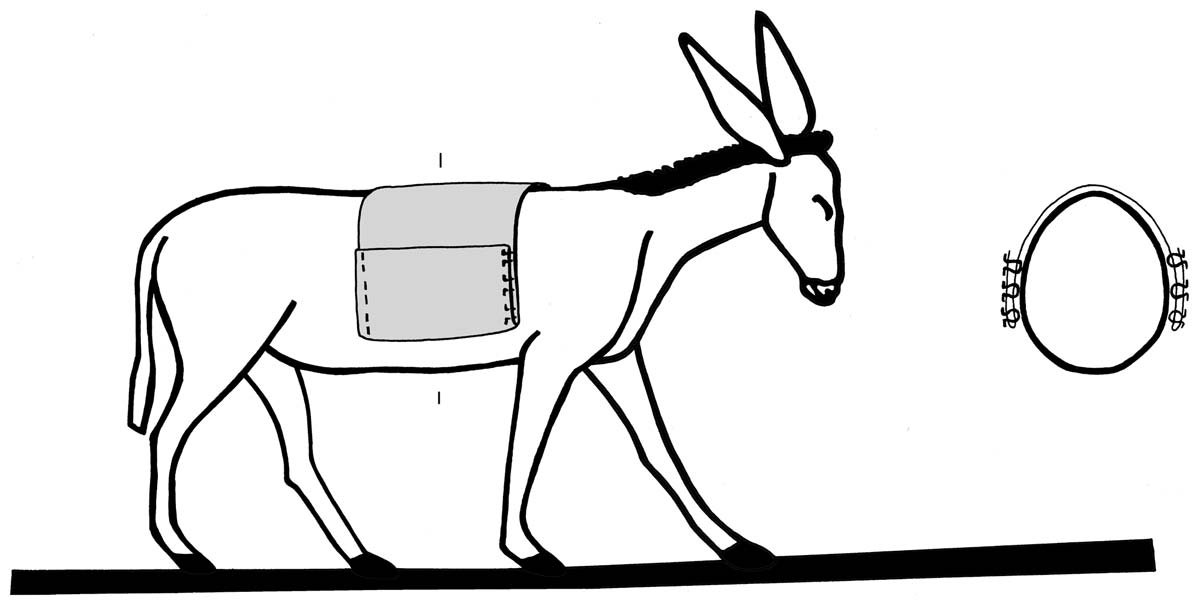
A reconstruction of the saddlebags on a donkey (from a depiction in a tomb painting at Beni Hasan, Egypt).
With a donkey
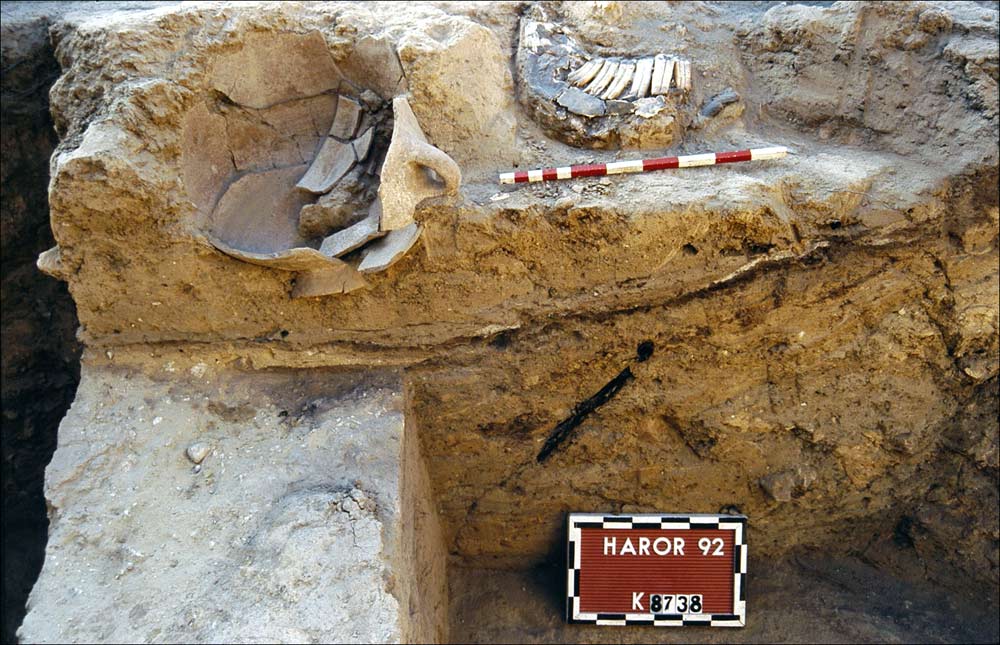
The donkey mandible and ceramic vessels found above the main donkey burial.
Get the world’s most fascinating discoveries delivered straight to your inbox.
Saddlebag fastener

One of the metal fasteners for the donkey's saddlebag.

